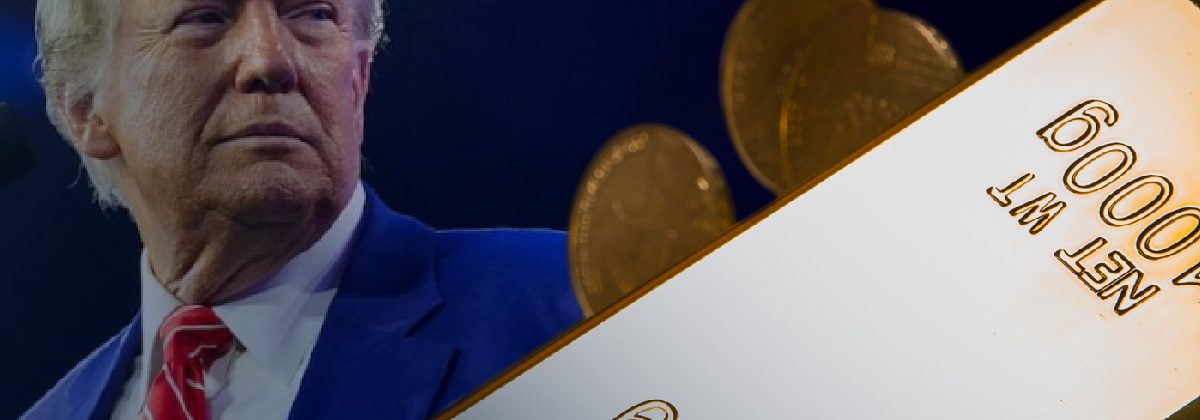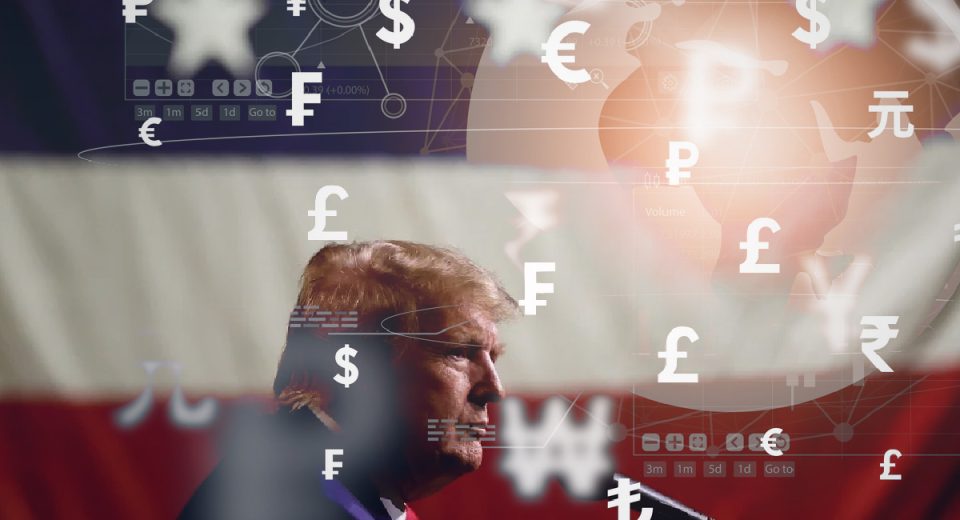Will Gold Recover from the Trump Effect in 2025?

Gold hit a record high of $2,805 a week before the US presidential election on November 5, 2024. However, after Donald Trump’s victory was announced, the price dropped 5%. Gold traders have been super active in 2025. Trump’s inauguration on January 20 pushed the yellow metal to an all-time high of $2,817.23 by January 31, only to send it down again to $2,780 by February 3. Just a week later, the safe-haven metal breached $2,900 on mounting anxiety over Trump’s tariff plans. Could gold keep testing more resistance levels or will it lose its shine as the year progresses?
Gold Could Remain Under Pressure
The most significant factor weighing on gold prices is the potential for the greenback to soar through Donald Trump’s term in office. This is likely to stifle investor interest in the yellow metal, since gold is valued in dollars and will become more expensive when the USD strengthens. But that isn’t the only reason why gold could be under pressure. Trump’s second term in the White House is expected to weigh on the precious metal because:
- The Republicans had promised an extension of the existing tax cuts, which are set to expire in 2025. Trump has also proposed additional deductions for car loans, a corporate tax rate of 15% (down from the current 21%) and tax exemptions for non-resident Americans. Also, the newly reinstated president had campaigned to expand tax cuts to replicate the pre-pandemic economic growth and boost domestic investment. This is expected to support the USD.
- President Trump has also promised hefty tariffs on major trade partners. Trump signed an executive order imposing 25% additional tariffs on imports from Mexico and Canada and added 10% tariffs to those from China. Negotiations were still on with Mexico and Canada regarding these increased tariffs at the time of writing. Costlier imports will create inflationary pressure in the US. With this in mind, the Fed adopted a wait-and-watch approach, holding interest rates steady at 4.25% to 4.5% at its January meeting. Conversely, cooling inflation in Europe is likely to lead to the ECB and BoE deepening interest rate cuts. Against this backdrop, the higher-yielding USD will remain attractive against other currencies for investors.
The most recent factor that has affected investor sentiment is JP Morgan’s scheduled delivery of $4 billion of gold bullion in February 2025. The world’s biggest bullion dealer is about to execute the second-largest delivery in history. In addition, the bank is contemplating bringing silver into the US by air rather than by ship. Although this would raise the cost of silver imports, rising industrial demand and the existing deficiency of the white metal is expected to yield gains in 2025. This highlights the potential of Trump’s tariffs in reshaping global trade.
Some Relief in Sight
Gold is considered a hedge against geopolitical conflicts and economic slowdowns. After the US tariff announcements, the nations involved have vowed to take retaliatory actions and even challenge the tariffs at the next World Trade Organisation (WTO) meeting. Meanwhile, the launch of DeepSeek-R1 has further intensified the US-China tech rivalry. The escalating trade war, combined with ongoing geopolitical tensions between Russia and Ukraine and in the Middle East may fuel gold demand, lending support to its price.
The debt situation in the US is a major hiccup in the extension of the Tax Cuts and Jobs Act (TCJA) of 2017. The US budget deficit is expected to reach $1.9 trillion in 2026 without the extension of tax cuts, representing 6% of the country’s GDP. If the tax cuts are followed through, national public debt in the US may accumulate to $32 trillion, a value greater than the entire US economy. This means an as-is extension of TCJA is unlikely.
Central banks of the BRICS nations are accumulating gold reserves, in an attempt to reduce their dependence on the greenback. This may keep gold demand elevated and support its prices through the year.
Trading Gold in 2025
The volatility in gold prices may persist in the near term, as Trump’s policies unfold. The heightened volatility creates tremendous opportunities for traders. Further, the per-ounce price of gold is forecasted to reach $3,000 in 2025. Traders can consider the following strategies for trading gold:
Double-Tops or Double-Bottoms
Evident price bounce-off from a key support or resistance level twice is considered a strong trend-reversal signal. Taking a short position as the candlestick chart forms a double top and a long position when it forms a double bottom is a popular strategy for trading gold price reversals.
RSI Divergence
A bullish Relative Strength Index (RSI) divergence occurs when the price is trending down, but the RSI continues to make higher lows. This indicates that the bearish sentiment is temporary and fading and the asset price is ripe for a bullish breakout. The breakout is confirmed when the price breaks through the resistance level. Traders often look for such opportunities to ride the next wave of uptrend in XAUUSD. The opposite holds true for trading a bearish divergence.
Most Popular Instruments to Trade Gold
A volatile environment means ample opportunities in the upward and downward directions. Traders popularly use derivative instruments, such as contracts for difference (CFDs), to take advantage of price movements in both directions. CFDs are traded on margin, which amplifies the purchase potential. But this also means that both profit and loss potential increases. Trading gold with leverage, therefore, requires diligent risk management. Employing stop loss and take profit measures is crucial while managing market risks. A benefit of CFDs is that traders can take a larger position in their speculated direction of price movement and hedge it with a smaller position in the opposite direction. This offsets losses if there is an unexpected market reversal.
To Sum Up
- Gold price abandons its year-long rally as Trump’s policies unfold.
- TCJA expansion and higher tariffs may fuel a USD rally.
- JPMorgan is set to deliver gold bullion worth $4 billion in February.
- Geopolitical conflicts support gold price.
- The US debt scene may also make gold attractive.
- Traders must refine their gold trading strategies to capture emerging opportunities.
Disclaimer:
All data, information and materials are published and provided “as is” solely for informational purposes only, and is not intended nor should be considered, in any way, as investment advice, recommendations, and/or suggestions for performing any actions with financial instruments. The information and opinions presented do not take into account any particular individual’s investment objectives, financial situation or needs, and hence does not constitute as an advice or a recommendation with respect to any investment product. All investors should seek advice from certified financial advisors based on their unique situation before making any investment decisions in accordance to their personal risk appetite. Blackwell Global endeavours to ensure that the information provided is complete and correct, but make no representation as to the actuality, accuracy or completeness of the information. Information, data and opinions may change without notice and Blackwell Global is not obliged to update on the changes. The opinions and views expressed are solely those of the authors and analysts and do not necessarily represent that of Blackwell Global or its management, shareholders, and affiliates. Any projections or views of the market provided may not prove to be accurate. Past performance is not necessarily an indicative of future performance. Blackwell Global assumes no liability for any loss arising directly or indirectly from use of or reliance on such information here in contained. Reproduction of this information, in whole or in part, is not permitted.




